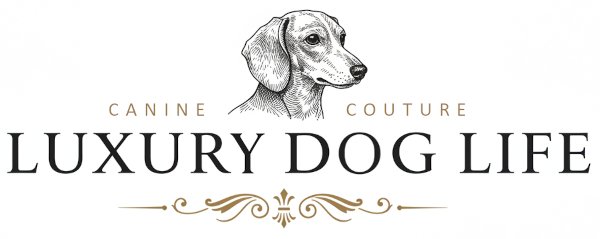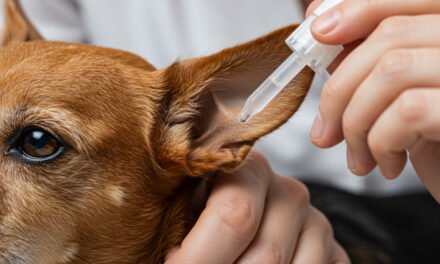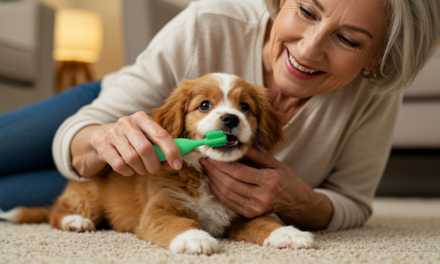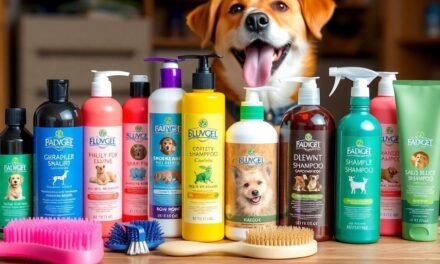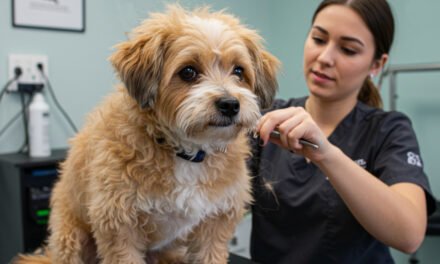Ever wonder how often you should be grooming your dog? It’s not just about keeping them looking good; it’s about their health too. From baths to nail trims, knowing what your pup needs can be a bit confusing. But don’t worry, we’re breaking it down for you. Whether your furry friend has a short coat or long flowing locks, we’ve got the info you need to keep them happy and healthy.
Key Takeaways
- Short-haired dogs usually need less frequent grooming compared to long-haired breeds.
- Bathing your dog too often can lead to skin issues, so find a balance based on their lifestyle.
- Regular nail trimming is important, typically every 3-4 weeks, to prevent discomfort.
- Professional groomers can offer guidance on a grooming schedule tailored to your dog’s needs.
- Brushing helps distribute natural oils and reduces shedding, making it an important part of grooming.
Understanding Your Dog’s Grooming Needs

Factors Influencing Grooming Frequency
Grooming your dog isn’t just about keeping them looking good—it’s about their overall health too. How often you groom your dog can vary greatly depending on a few key factors. Breed and coat type are major influences. For example, grooming frequency for dogs can vary based on breed and coat type, with some needing grooming every 4-6 weeks and others only requiring it every few months. Dogs with longer hair or double coats often need more frequent grooming than those with short, single-layer coats.
Another factor is your dog’s lifestyle. Dogs that spend a lot of time outdoors, romping through mud or swimming, will need more frequent baths and brushing than dogs that mostly stay indoors.
Seasonal changes can also affect grooming needs. During shedding season, you might need to brush your dog more often to keep loose fur under control.
The Role of Coat Type in Grooming
The type of coat your dog has plays a huge role in determining their grooming needs. Dogs with curly or wavy hair, like Poodles or Bichon Frise, often require professional grooming every 4-6 weeks. Their hair can easily become matted if not brushed regularly. On the other hand, dogs with silky coats, like Yorkies, need daily brushing to prevent tangles and regular trims to maintain their coat’s health.
For short-haired breeds, grooming might be less frequent, but it’s still necessary. Regular brushing helps distribute natural oils and keep their coat shiny. It’s important to remember that even if a dog doesn’t look like they need grooming, regular maintenance is essential for their health.
Lifestyle and Environmental Considerations
Your dog’s lifestyle and environment significantly impact how often they need grooming. Dogs that are more active and spend time in varied environments, like hiking trails or beaches, will naturally get dirtier and may need more frequent baths and grooming sessions.
Additionally, living in a region with extreme weather conditions can affect your dog’s coat and skin health. In colder climates, dogs might need more grooming to prevent dry skin, while in warmer areas, keeping the coat trimmed can help them stay cool.
Regular grooming sessions are not just about appearance. They are a chance to check your dog’s skin for any unusual bumps or signs of irritation, ensuring your furry friend stays healthy and comfortable.
By understanding these factors, you can tailor a grooming routine that suits your dog’s unique needs, ensuring they stay happy and healthy.
Bathing Your Dog: How Often Is Too Often?
Determining the Right Bathing Schedule
Figuring out how often to bathe your dog can be tricky. It depends on their coat type, lifestyle, and even their skin’s oiliness. Dogs with oily skin might need a bath every 4 to 6 weeks, while those with short hair might be fine with a bath every 6 to 12 weeks. If your pup loves rolling in the mud or playing outside, you might need to bathe them more often. For puppies, a monthly bath helps keep dirt and oils at bay.
Impact of Over-Bathing on Skin Health
Too many baths can strip away natural oils, leaving your dog’s skin dry and itchy. This can lead to more scratching and potential skin infections. It’s important to find a balance that keeps your dog clean without harming their skin.
Choosing the Right Shampoo for Your Dog
When it comes to shampoo, not all are created equal. You should always opt for a shampoo specifically made for dogs, as human shampoos can irritate their skin. Consider your dog’s specific needs, such as sensitive skin or allergies, and choose accordingly. A good dog shampoo will clean thoroughly without stripping essential oils.
Keeping your dog clean is important, but overdoing it can do more harm than good. Find a schedule that works for your pet’s needs and stick to it for a happy, healthy pup.
Nail Trimming: Keeping Your Dog Comfortable
Signs Your Dog Needs a Nail Trim
Knowing when to trim your dog’s nails is crucial for their comfort and health. Long nails can cause pain and even injury, making it essential to keep them at a manageable length. Here are some signs to look out for:
- Your dog’s nails click on hard surfaces like floors.
- You notice your dog walking awkwardly or with a limp.
- The nails start to curl or twist.
If you spot any of these signs, it’s time to get those clippers out.
Tools and Techniques for Safe Nail Trimming
When it comes to trimming your dog’s nails, having the right tools is half the battle. You can choose between a sharp nail clipper specifically designed for dogs or a Dremel grinder. Each tool has its own learning curve, so it’s important to find what works best for you and your dog. Here’s how to start:
- Get your dog comfortable with the tool by letting them sniff it and hear its sound.
- Trim one nail a day, rewarding your dog with a treat after each trim.
- Gradually increase the number of nails you trim in one session.
Frequency of Nail Trimming Based on Activity Level
The frequency of nail trimming depends largely on your dog’s activity level and the surfaces they walk on. Dogs that frequently walk on pavement may naturally wear down their nails and require less frequent trims. On the other hand, dogs that mostly walk on softer surfaces like grass or carpet might need more regular attention. Here’s a simple guide:
| Activity Level | Recommended Trimming Frequency |
|---|---|
| High (e.g., daily walks on pavement) | Every 4-6 weeks |
| Moderate (e.g., mixed surfaces) | Every 3-4 weeks |
| Low (e.g., mostly indoors or on grass) | Every 2-3 weeks |
Regular nail trimming is essential for preventing pain and injury in dogs. Overgrown nails can curl under the paw pads, leading to infections and altering the dog’s stance.
By keeping your dog’s nails in check, you ensure they remain comfortable and healthy, avoiding unnecessary pain and potential infections.
Brushing and Coat Maintenance
Brushing Techniques for Different Coat Types
Understanding your dog’s coat type is key to figuring out how often you should brush them. For dogs with short, smooth coats like Bulldogs, brushing once a week with a rubber-bristled brush helps distribute natural oils and keep the coat shiny. If your dog has long, silky hair like a Shih Tzu, daily brushing with a wire slicker brush or a steel comb is needed to prevent tangles. Double-coated breeds, such as Huskies, require a more frequent brushing routine, especially when they shed their undercoat. An undercoat rake can help manage this.
Preventing and Addressing Matting
Matting can be a real pain for dogs and owners alike. Regular brushing is your best defense against mats, especially for long-haired breeds. If mats do form, work them out gently with your fingers or a mat splitter. Water can worsen mats, so always brush your dog before bath time. For stubborn mats, a professional groomer might be your best bet.
The Benefits of Regular Brushing
Regular brushing does more than just keep your dog looking good. It helps remove dirt and dead hair, reduces shedding, and allows you to check for skin issues or parasites. Brushing can also be a bonding time for you and your dog. It’s a moment to relax and connect. Remember, regular grooming is essential for dogs, and it helps keep their coat healthy and shiny.
Professional Grooming vs. At-Home Care
When to Seek Professional Grooming Services
Choosing between professional grooming and doing it yourself can be a bit challenging. Professional groomers offer specialized services that might be tough to replicate at home. If your dog has a long, curly, or double coat, they might benefit from the expertise of a groomer. These professionals can handle tasks like thorough undercoat removal, nail trimming, and even expressing anal glands. For those who are short on time or unsure about handling these tasks, a groomer becomes not just a luxury, but a necessity.
Benefits of Professional Grooming
- Expertise: Groomers are trained to understand different breeds and their specific grooming needs.
- Specialized Tools: They have access to high-quality tools and products that are often more effective than what you might have at home.
- Health Checks: A professional can spot potential health issues, like skin infections or ear problems, early on.
DIY Grooming Tips and Tricks
While professional grooming has its perks, many pet owners prefer the hands-on approach of grooming at home. This not only saves money but also strengthens the bond between you and your dog. To get started, you’ll need a few basic tools:
- Rubber-bristled brush or slicker brush
- Nail clippers or a Dremel grinder
- Dog-specific shampoo and conditioner
DIY Grooming Steps
- Brush Regularly: This helps keep your dog’s coat free of tangles and mats.
- Bathe as Needed: Depending on your dog’s breed and lifestyle, this might be once a month or every few months.
- Check Their Ears and Nails: Regular inspections can prevent infections and overgrowth.
Balancing Professional and Home Grooming
Finding the right balance between professional and at-home grooming is key. You might choose to visit a groomer for major tasks while maintaining your dog’s coat at home in between visits. Regular brushing and quick clean-ups can keep your pet comfortable and reduce the workload for the groomer.
Professional grooming isn’t just about making your dog look good. It’s about ensuring their comfort and health. By combining both professional and at-home care, you can keep your furry friend happy and healthy.
For a detailed comparison between home grooming and professional pet grooming, consider factors like costs, time, and quality to make an informed decision for your pet.
Special Considerations for Puppies and Senior Dogs
Grooming Needs of Puppies
Getting a puppy used to grooming is super important. Start early so they get comfortable with the whole process. At first, you might just introduce them to brushes and combs without actually grooming them. Make it fun with treats and praise. Puppies usually don’t need full grooming sessions right away. Focus on short, positive experiences.
- Introduce grooming tools gradually
- Keep sessions short and positive
- Use treats and praise for encouragement
Adjusting Grooming Routines for Senior Dogs
Senior dogs often have different grooming needs compared to younger ones. They might have arthritis or other health issues that make grooming a bit tougher. Be gentle and go slow. Regular grooming can help you keep an eye on any new lumps or skin changes. Adjust the frequency based on their comfort and health.
- Use soft brushes for sensitive skin
- Be gentle around joints and sore spots
- Monitor for skin changes or lumps
Handling Sensitive Skin and Health Issues
Both puppies and senior dogs can have sensitive skin. Choosing the right products is key. Look for shampoos and conditioners made for sensitive skin. If your dog has allergies, consult your vet for recommendations. Regular grooming can help manage skin conditions and keep your dog comfy.
Grooming isn’t just about keeping your dog looking good. It’s also a chance to check for any health issues and bond with your pet. Make it a routine that’s enjoyable for both of you.
Creating a Stress-Free Grooming Routine

Making Grooming a Positive Experience
Grooming doesn’t have to be a dreaded task for your dog. Building a positive association with grooming can make a world of difference. Start by introducing your dog to grooming tools and routines gradually. Make sure to reward your dog with treats or praise during and after each session. This way, your dog begins to associate grooming with positive outcomes. You might be surprised how quickly they adapt to the routine.
Incorporating Fun and Relaxation
Adding a bit of fun and relaxation to grooming sessions can help ease any tension. Consider incorporating playtime or a short walk before you start grooming. This not only burns off some energy but also helps your dog feel more at ease. To ensure a stress-free dog bathing experience, thoroughly brush your dog to remove loose fur and tangles, which can help reduce anxiety in 78% of dogs. Additionally, exercising your dog beforehand can lead to a calmer demeanor during bath time. You can also use calming sprays or music designed for dogs to create a soothing environment.
Scheduling Regular Grooming Sessions
Consistency is key. Establishing a regular grooming schedule helps your dog know what to expect and when. Whether it’s a weekly brush or a monthly bath, sticking to a routine can significantly reduce stress for both you and your pup. Keep a calendar or set reminders to ensure you don’t miss a session. Regular grooming not only keeps your dog looking good but also allows you to monitor their health, noticing things like skin changes or lumps early on. With a little planning, grooming becomes just another part of your dog’s happy routine.
Conclusion
Grooming your dog isn’t just about keeping them looking good—it’s about their health and happiness too. Whether it’s a quick nail trim or a full-on spa day, regular grooming can make a world of difference. Sure, it might seem like a lot to keep track of, but once you get into the groove, it becomes second nature. Remember, every dog is different. Some might need a bath every month, while others can go a bit longer. The key is to pay attention to your dog’s needs and adjust as necessary. And hey, don’t be afraid to ask a pro for help if you’re unsure. After all, a well-groomed dog is a happy dog, and who doesn’t want that?
Frequently Asked Questions
How often should I trim my dog’s nails?
It’s important to trim your dog’s nails every 3-4 weeks. If your dog walks on hard surfaces like pavement, they may need less frequent trims. Puppies’ nails grow faster and might need weekly trimming.
When and how often should I brush my dog’s teeth?
Ideally, you should brush your dog’s teeth daily. If that’s not possible, aim for 2-3 times a week. Use a dog-friendly toothbrush and toothpaste.
How often does my dog need a bath?
Most dogs need a bath every 6-8 weeks, but this can vary based on their activity level and coat type. Dogs with oily skin might need more frequent baths.
What are the signs that my dog needs a nail trim?
If you hear your dog’s nails clicking on hard floors or if they seem to struggle with walking, it’s time for a nail trim.
How often should I clean my dog’s ears?
Clean your dog’s ears every 1-2 months. Dogs with floppy ears or those prone to ear infections might need more frequent cleanings.
What should I consider when choosing a dog shampoo?
Select a shampoo made specifically for dogs, considering their skin type and any allergies. Avoid using human shampoos as they can irritate a dog’s skin.
